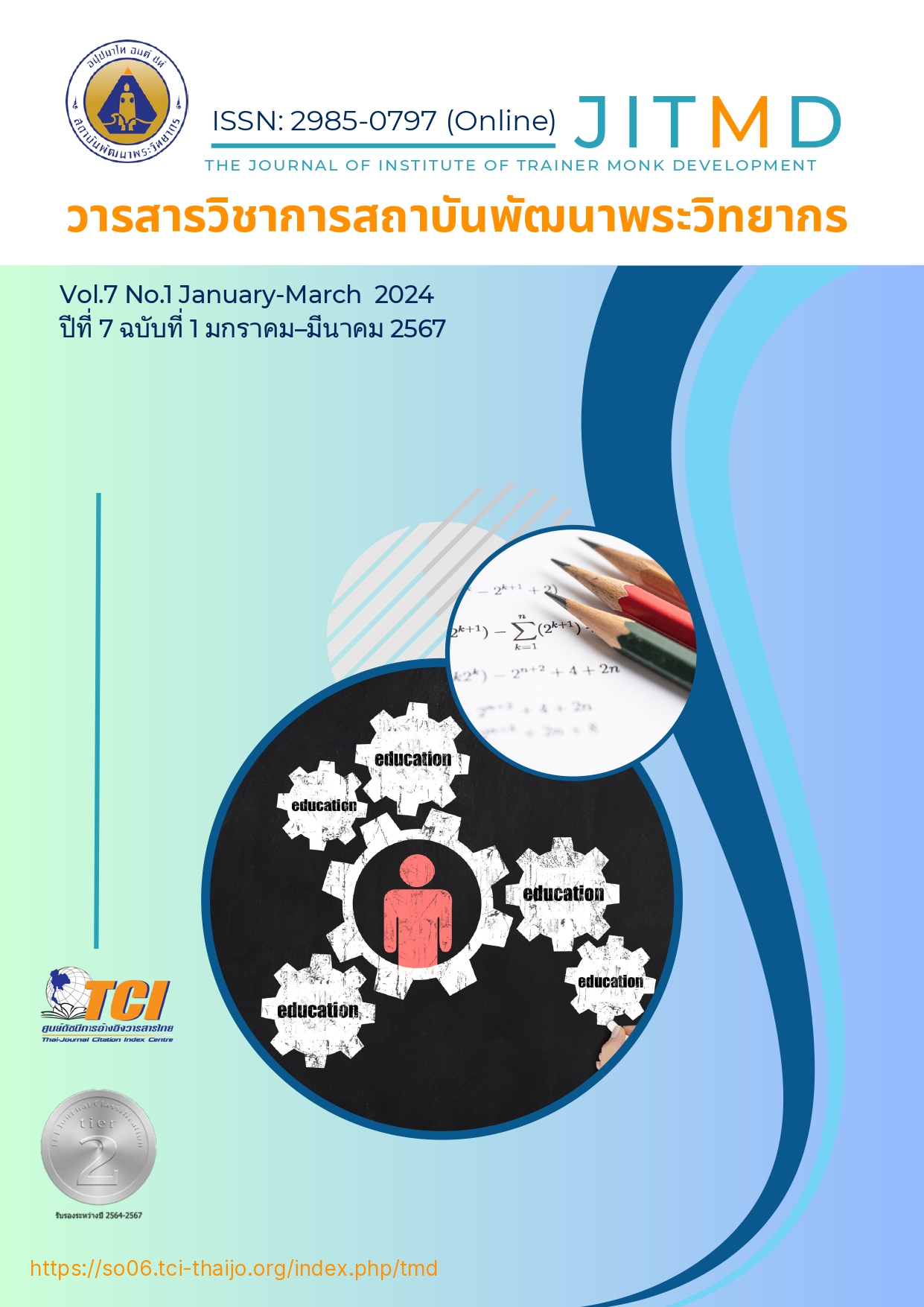A Study on Development Behaviors of Thai Music to Contemporary Thai Music: a Case Study of Petra Band
Main Article Content
Abstract
This article constitutes a component of a research endeavor entitled "A Study on the Development Behaviors of Thai Music Towards Contemporary Music: A Case Study of the PETRA Band." The primary objective of this research is to investigate the concepts underlying the developmental behaviors of Thai music within the contemporary context as exemplified by the PETRA Band. Furthermore, the study aims to explore the incorporation of Western music techniques into Thai music. The research methodology employed in this study is descriptive and analytical, with a qualitative approach. The research tools utilized include interview forms, participatory observation, and information recording. The findings of the study reveal that the PETRA Band has effectively transformed the developmental behaviors of Thai music into a contemporary form by reimagining songs as Thai music scores. It is worth noting that Thai music scores differ from Western music scores. The PETRA ensemble showcases the distinctive aspects of playing both Thai and Western musical instruments, thereby composing songs where each piece of Thai instrument playing replaces the omission of Western instruments, while still incorporating techniques of playing Western instruments within the composition. This innovative approach has resulted in the emergence of a new music style. The Petra Band intends to promote the popularity of Thai music by demonstrating that Thai musical instruments can be used to play popular songs. This perspective aligns with the concept of Cultural Hybridization, which asserts that cultures must constantly adapt in order to remain sustainable. It also corresponds to the notion of cultural associations that can assume diverse forms. In the case of the Petra Band, this process is articulated as a result of the fusion of Thai and Western music, despite their fundamental differences. Consequently, the Petra Band exemplifies a cultural amalgamation, characterized by the integration of different cultural species, ultimately giving rise to a novel cultural identity and garnering widespread acclaim.
Article Details

This work is licensed under a Creative Commons Attribution-NonCommercial-NoDerivatives 4.0 International License.
บทความที่ได้รับการตีพิมพ์เป็นลิขสิทธิ์ของวารสารวิชาการสถาบันพัฒนาพระวิทยากร
ข้อความที่ปรากฎอยู่ในบทความที่ได้รับการตีพิมพ์ในวารสาร ถือเป็นความรับผิดชอบของผู้เขียนบทความ และข้อคิดเห็นนั้นไม่ถือว่าเป็นทัศนะและความรับผิดชอบของกองบรรณาธิการวารสารวิชาการสถาบันพัฒนาพระวิทยากร
References
กนกวรรณ เพ็งสว่าง. (2560). ศิลปะการแสดงดนตรีไทยในธุรกิจโฮมสเตย์: กรณีศึกษาบ้านพิมานโฮมสเตย์และดนตรีไทย. วิทยานิพนธ์ศาสตรมหาบัณฑิต การบริหารงานวัฒนธรรม. มหาวิทยาลัยธรรมศาสตร์. กรุงเทพฯ.
ณัฐชยา นัจจนาวากุล. (2563). พลวัตของการเปลี่ยนแปลงแบบแผนดนตรีไทยสู่ดนตรีไทยร่วมสมัย. วารสารศิลปกรรมศาสตร์ จุฬาลงกรณ์มหาวิทยาลัย, 7(2): 25-40.
พูนพิศ อมาตยกุล. (2554). การก่อเกิดเพลงไทยสากล: แนวคิดด้านดนตรีวิทยา. (พิมพ์ครั้งที่ 16). กรุงเทพฯ: บริษัทอมรินทร์พริ้นติ้งแอนด์พับลิชชิ่ง จำกัด (มหาชน).
ภควดี ศรีพูนพันธ์. (2562). การสื่อสารความเป็นไทยผ่านวัฒนธรรมไอดอลญี่ปุ่น: กรณีศึกษาวง BNK48. วิทยานิพนธ์มหาบัณฑิตสื่อสารมวลชน. มหาวิทยาลัยธรรมศาสตร์. กรุงเทพฯ.
วิทวัส พลช่วย. (2563). การศึกษาองค์ประกอบของดนตรีไทยในภาพยนตร์เชิงอนุรักษ์ศิลปวัฒนธรรมไทย. ดุษฎีนิพนธ์ศาสตรมหาบัณฑิต สังคีตวิจัยและพัฒนา. มหาวิทยาลัยศิลปากร. กรุงเทพฯ.
วีรวัฒน์ เสนจันทร์ฒิไชย. (2563). กลวิธีการใช้ระบบนิ้วเพื่อบรรเลงซอไทยสําหรับวงดนตรีไทยร่วมสมัย. กรุงเทพฯ: สถาบันบัณฑิตพัฒนศิลป์.


